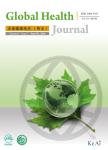An extended analysis of cardiovascular benefits of indoor air filtration intervention among elderly:a randomized crossover trial(Beijing indoor air purifier study,BIAPSY)
作者机构:Institute for Risk Assessment SciencesUtrecht UniversityP.O.Box 801253508 TC UtrechtThe Netherlands Department of Occupational and Environmental HealthSchool of Public HealthPeking UniversityBeijing 100191China Peking University Institute of Environmental MedicinePeking UniversityBeijing 100191China Key Laboratory of Molecular Cardiovascular Sciences of Ministry of EducationPeking UniversityBeijing 100191China Department of Respiratory MedicinePeking University Third HospitalBeijing 100191China Section of Environmental HealthDepartment of Public HealthUniversity of CopenhagenCopenhagen1353 Copenhagen KDenmark State Key Laboratory of Environmental Criteria and Risk AssessmentState Environmental Protection Key Laboratory of Ecological Effect and Risk Assessment of ChemicalsChinese Research Academy of Environmental SciencesBeijing 100012China
出 版 物:《Global Health Journal》 (全球健康杂志(英文))
年 卷 期:2022年第6卷第1期
页 面:30-34页
学科分类:07[理学] 070602[理学-大气物理学与大气环境] 0706[理学-大气科学]
基 金:This work was supported by Beijing Natural Science Foundation(7222246) Royal Dutch Philips Electronics Ltd.(Grant NL18-2100478471)
主 题:Air filtration Indoor air pollution Particulate matter Cardiovascular benefit Elderly
摘 要:Objective Evidence on potential cardiovascular benefits of personal-level intervention among the elderly exposed to high levels of particulate matter(PM)remains *** aimed to assess improvements in surrogate markers of cardiovascular injury in vulnerable populations at risks by using indoor air filtration *** We conducted a randomized crossover trial for 2 separate 2-week air filtration interventions in 20 households of patients with stable chronic obstructive pulmonary disease and their partners in the winter of 2013,with concurrent measurements of indoor *** changes in biomarkers indicative of cardiac injury,atherosclerosis progression and systemic inflammation following intervention were evaluated using linear mixed-effect *** In the analysis,average levels of indoor PM with aerodynamic diameters2.5µm(PM2.5)decreased significantly by 59.2%(from 59.6 to 24.3µg/m3,P0.001)during the active air *** reduction was accompanied by improvements in levels of high-sensitivity cardiac troponin I by−84.6%(95%confidence interval[CI]:−90.7 to−78.6),growth differentiation factor-15 by−48.1%(95%CI:−31.2 to−25.6),osteoprotegerin by−65.4%(95%CI:−56.5 to−18.7),interleukin-4 by−46.6%(95%CI:−62.3 to−31.0)and myeloperoxidase by−60.3%(95%CI:−83.7 to−3.0),*** Indoor air filtration intervention may provide potential cardiovascular benefits in vulnerable populations at risks.



